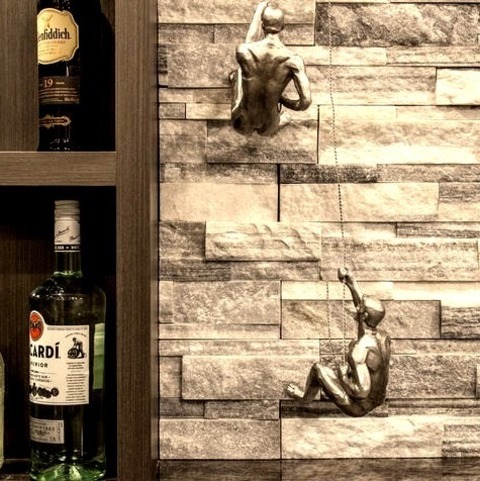Your gateway to endless inspiration
Marble - Blog Posts

Casual draw of a concept I’ve had since steven universe future came out and just never had the wherewithal to do anything with.
The concept is simple: a resort for fusions. Once permanent and mixed gem fusion became legal, a few fusions who had hidden who they were wanted a place where they could relax. They earned a vacation from looking over their shoulder constantly. A resort was born, built out of an abandoned Blue Diiamond entertainment planet. It’s incredibly beautiful, fancy, and perfect for the couple looking to get away from the memory of the pressures of era 1 and 2.
Within the resort, there are two single gems. Snakeskin Agate and “Blackjack” Pearl. Snakeskin despises that the resort she used to work so hard at is a hub for these disgusting displays now. She hates era three, hates all these new rules, and hates Steven most of all. Snakeskin threatened her Pearl, Blackjack, into staying with her at the resort. She has a plan. A devious (but not terribly smart) plan.
Her idea is to have her Pearl scope out the fusions that come to this resort, force the weak ones into a fusion, and gain power. Slowly gaining enough power with enough gems to overthrow this silly new empire. And put things the way they should be. Orderly, and right.
Blackjack doesn’t necessarily like this plan. She loves the concept of era three and desperately wants to be free from her abusive owner .She was dragging her feet on the plan, delaying it the best she could.
Until Steven Universe himself decides to check out this resort.

I, too, want to sit on a throne built from my enemies’ bodies, forever frozen in time.
(medusa in her throne by reza sedhi.)

Walk Out - Basement Basement - large walk-out basement idea

Bathroom - Kids Example of a small transitional kids' white tile and subway tile ceramic tile, blue floor, single-sink and wallpaper bathroom design with shaker cabinets, white cabinets, a two-piece toilet, gray walls, an undermount sink, quartz countertops, white countertops and a built-in vanity

Home Bar Single Wall in Minneapolis Mid-sized, single-wall, traditional home bar with raised-panel cabinets, dark cabinets, marble countertops, white backsplash, and stone tile backsplash.

Home Bar - Contemporary Home Bar Large trendy l-shaped wet bar photo with open cabinets, gray cabinets, marble countertops and brown backsplash
Great Room Kitchen

Large farmhouse l-shaped open concept kitchen image with an island, an undermount sink, raised-panel cabinets, medium tone wood cabinets, marble countertops, and white and marble backsplashes.
Enclosed in Houston

Inspiration for a mid-sized transitional light wood floor enclosed dining room remodel with beige walls and no fireplace

Walk Out Basement Basement: A medium-sized craftsman walk-out basement design featuring green walls

Sunshine Coast Asian Landscape
L-Shape Home Bar

Large transitional l-shaped flat-panel cabinets with a limestone backsplash, an undermount sink, brown cabinets, marble worktops, and gray backsplash are some ideas for a seated home bar.

Basement Walk Out in Omaha Mid-sized transitional walk-out porcelain tile and gray floor basement photo with white walls and no fireplace
Black Marble: NASA View Illuminates Earth at Night
When the sun goes down, the lights on Earth shine bright. A new look using our satellite data captures the lights coming from our neighborhoods, vehicles, buildings, factories, fishing vessels and other human activity brightening the night.

Our scientists have just released the first new global map of Earth at night since 2012. This nighttime view of our home planet, dubbed the Black Marble, provides researchers with a unique perspective of human activities around the globe.
By studying Earth at night, researchers can investigate how and why cities expand, monitor light intensity to estimate energy use and economic activity, and aid in disaster response in near-real time.

The data on Earth at night comes from the Visible Infrared Imaging Radiometer Suite (VIIRS) instrument on the Suomi National Polar-orbiting Partnership satellite, jointly managed by NASA and the National Oceanic and Atmospheric Administration (NOAA).
VIIRS captures visible and infrared light, allowing researchers to glimpse the Earth as it looks to astronauts peering out of the International Space Station. The new map is a composite of data collected in 2016, and it took several months of processing to filter out clouds, moonlight, airglow, and other interfering features to create the global image. In the coming months our scientists will release daily nighttime lights data at even finer resolutions for the first time.

The East Coast sparkles with population hubs, suburbs circling cities and major roadways. The I-95 corridor includes the most densely populated region of the United States – the stretch from Washington, DC to Boston.
To get images like these from the satellite data, our scientists had to filter out moonlight, aerosols and other sources of extraneous light – the goal is to eventually be able to detect the lights from a single building or fishing boat.

Daytime satellite images, like this one from Landsat 8, can show us the forests, deserts, mountains, waterways and built-up cities. Add a nighttime view, and scientists can study when and how people are using these limited resources – like the lights tracing the Nile River leading to the metropolis of Cairo, Egypt.

Lights aren’t confined to land. With the global nighttime view, the ocean is dotted with fishing fleets, including boats that try to attract their catch with bright lights.

What lights illuminate your neighborhood? Download a high-resolution version of the Black Marble HERE, and find out more about our new night lights data HERE.
Make sure to follow us on Tumblr for your regular dose of space: http://nasa.tumblr.com






